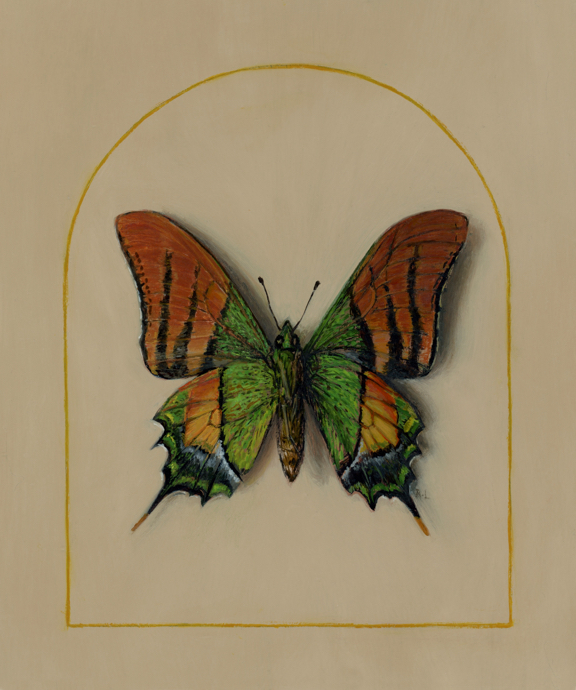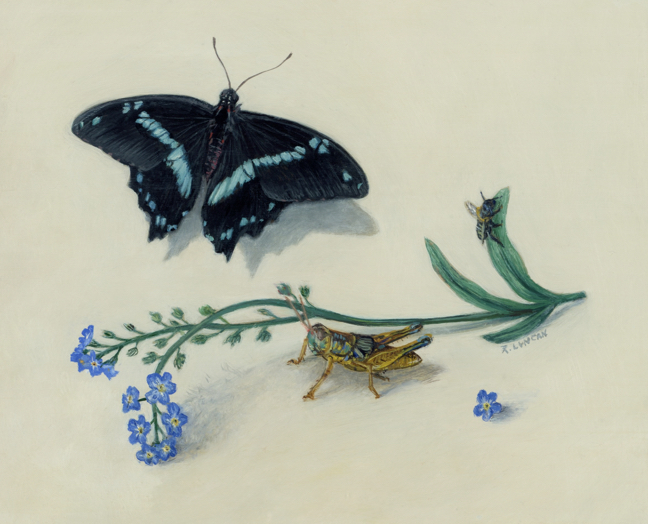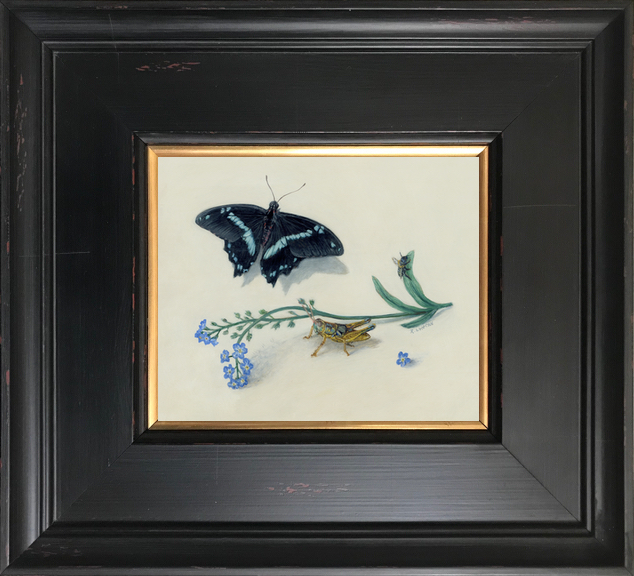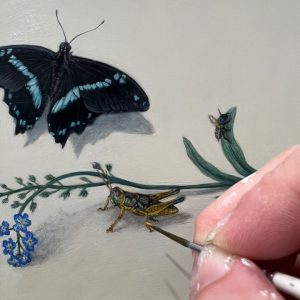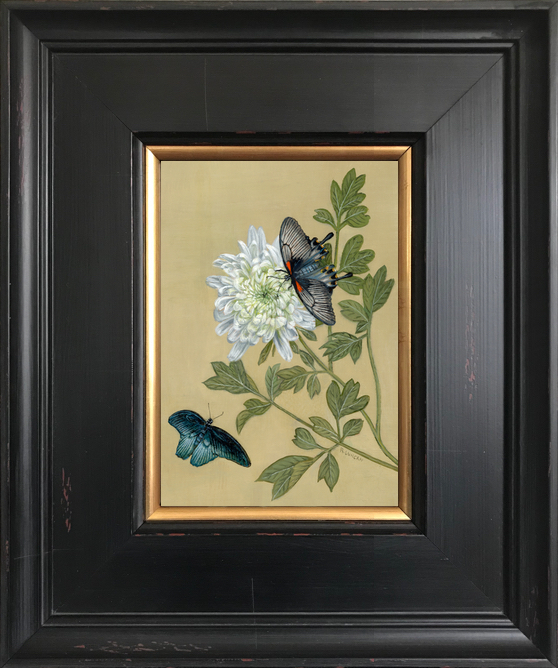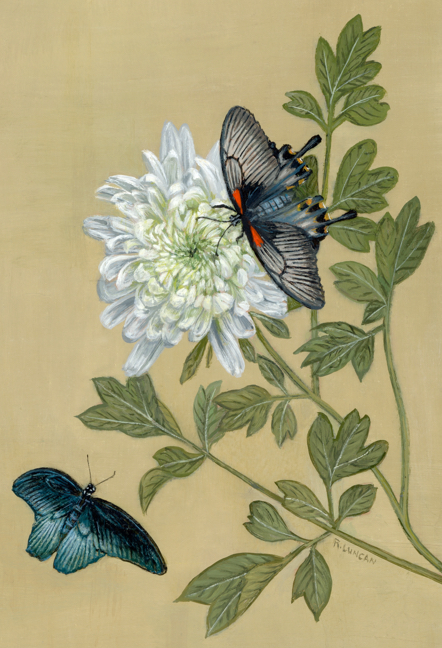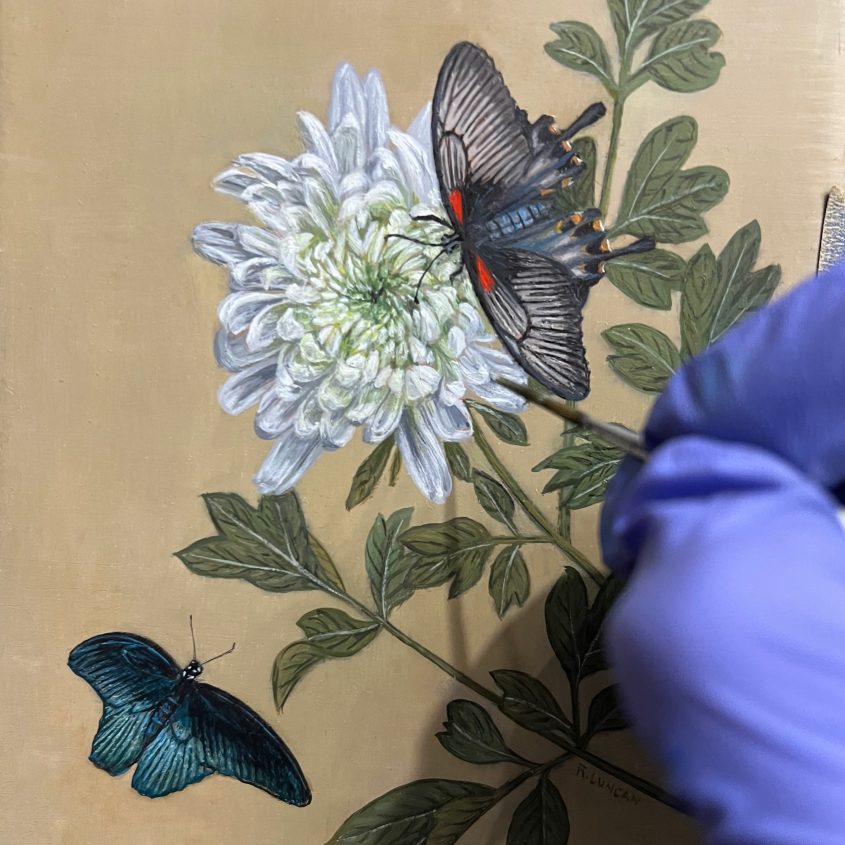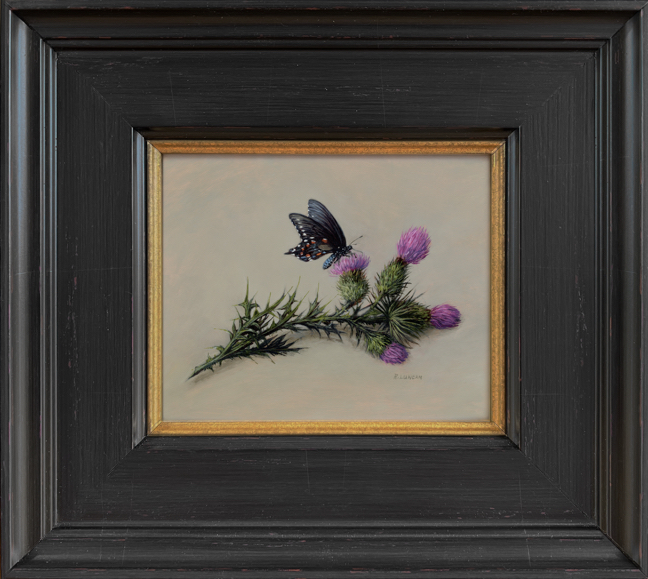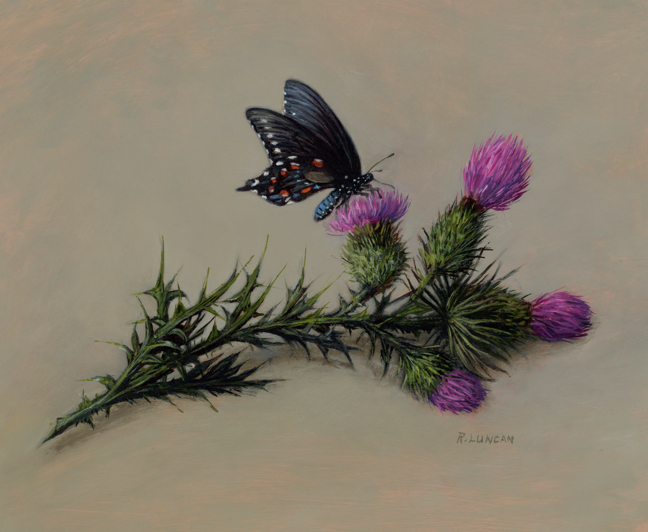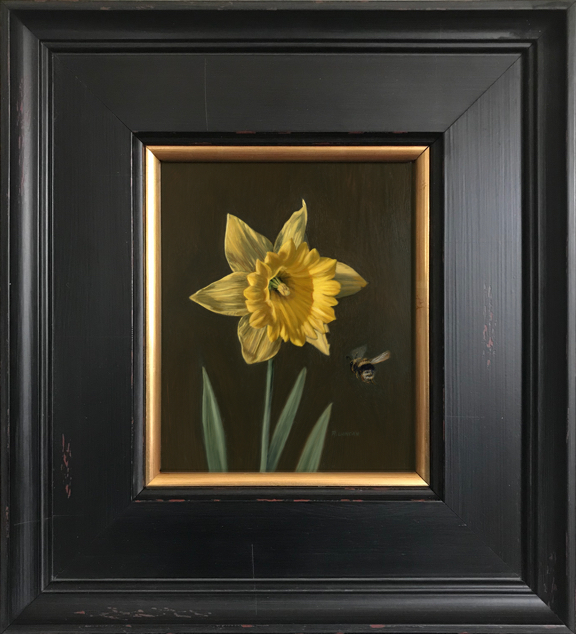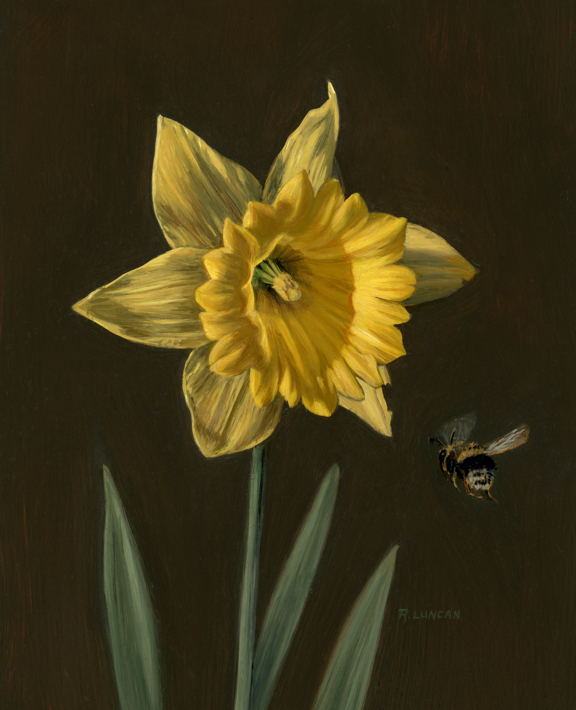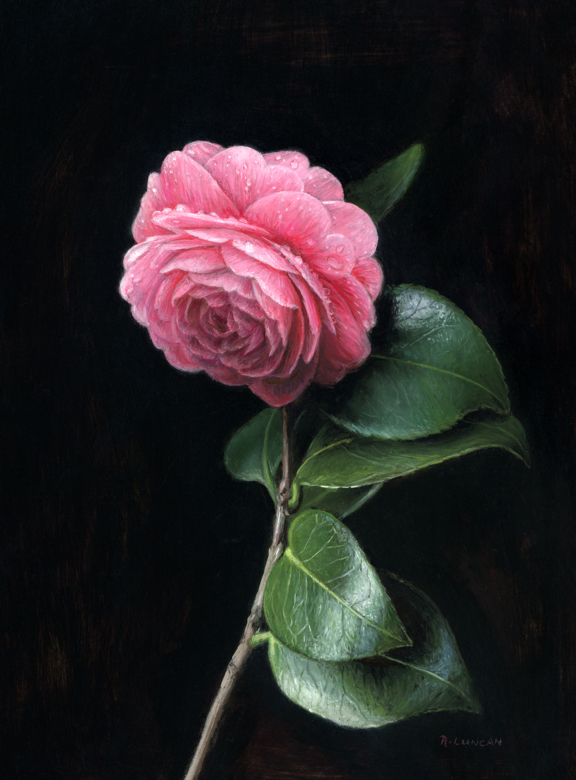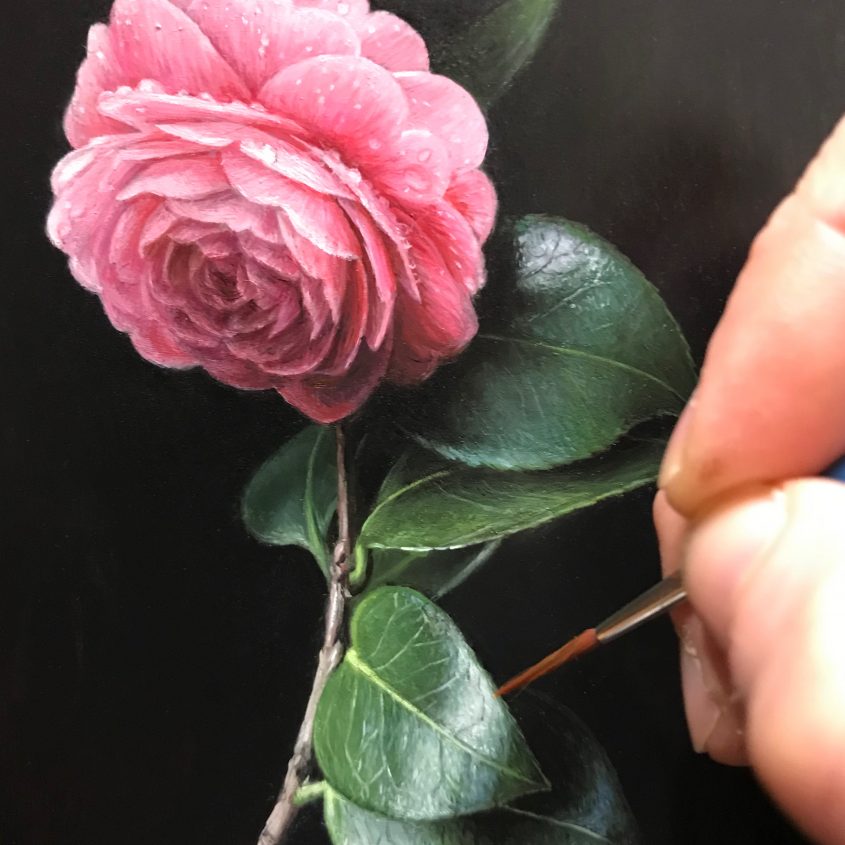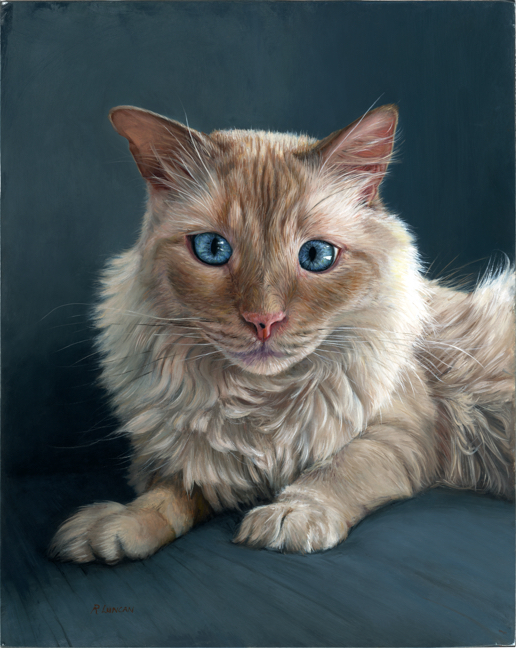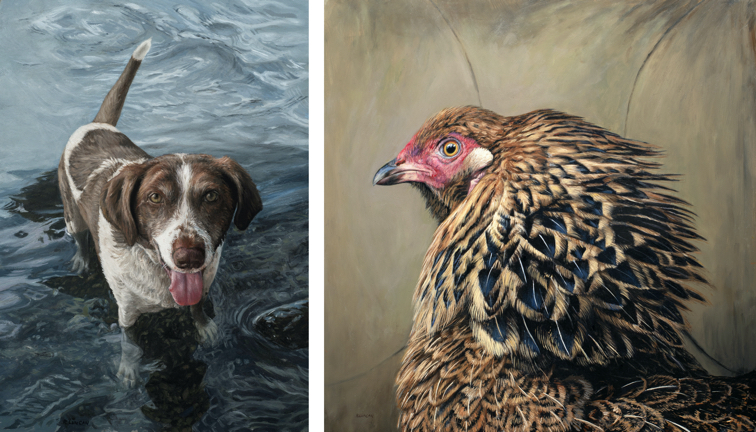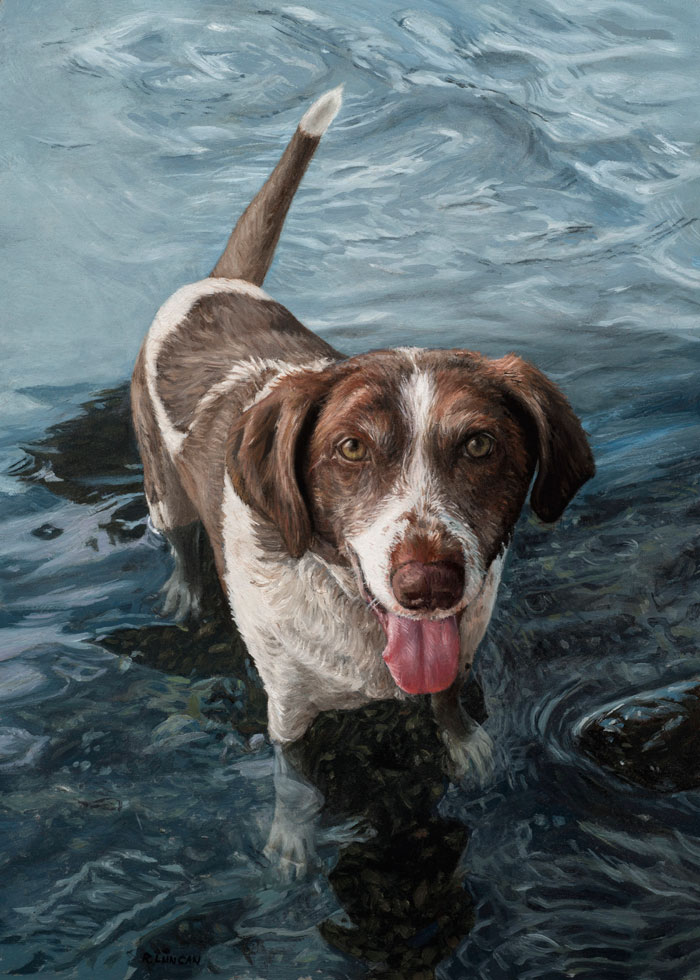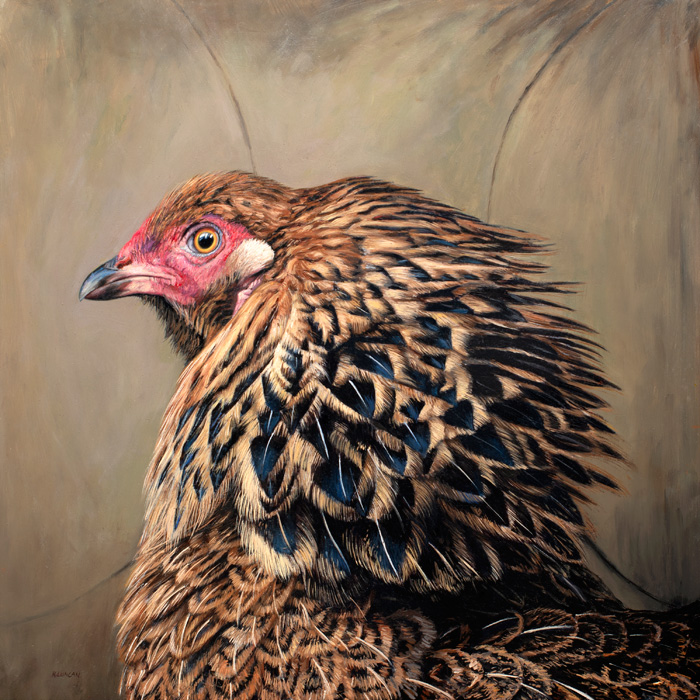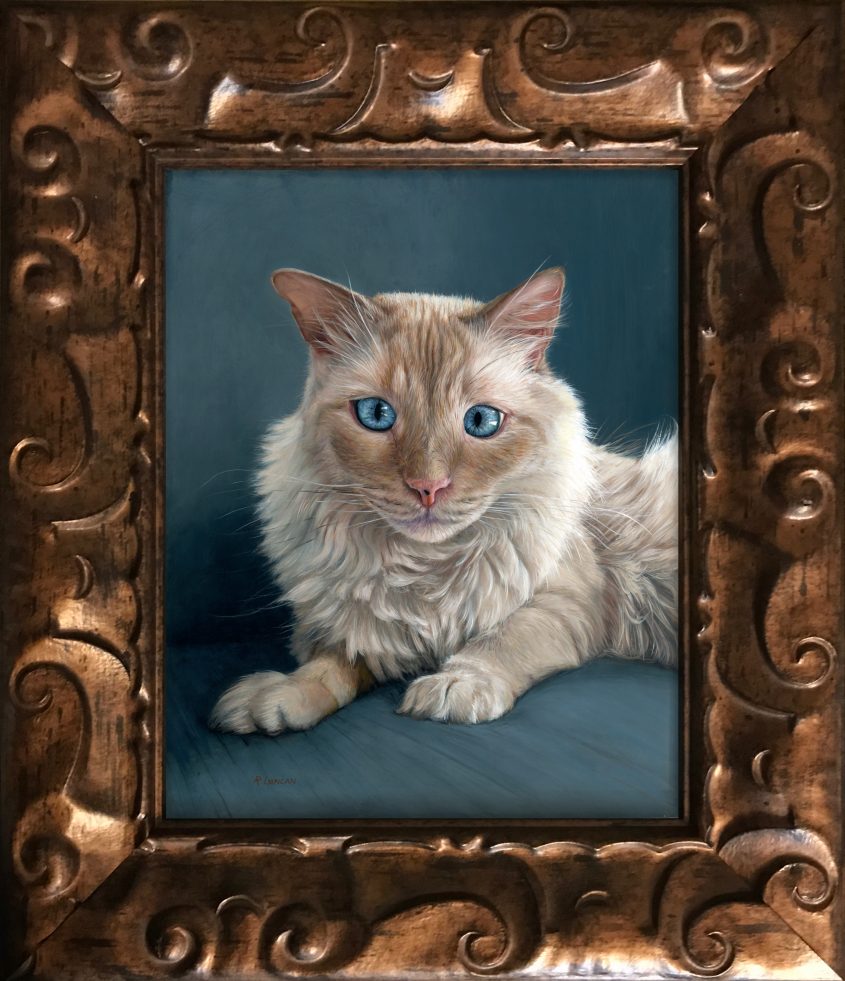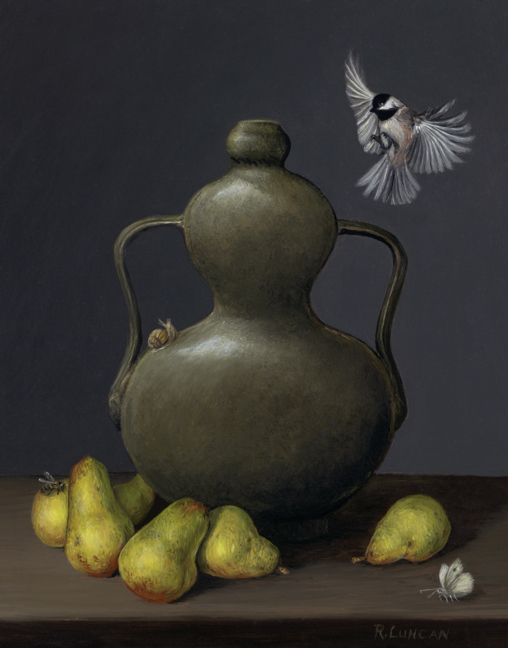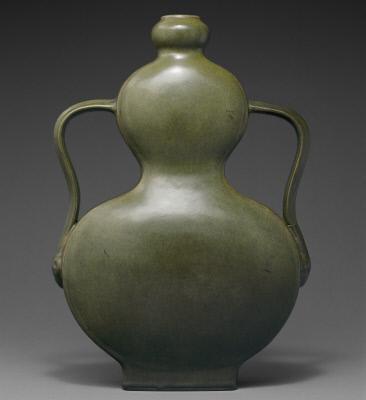Emperor of India
When I started my monthly miniature Swallowtail series, I warned you that they come in many sizes and shapes, but this one is quite exceptional. The Teinopalpus imperialis is a rare species which can be found fluttering in patches across the Himalayas, through Nepal and north India all the way east to north Vietnam. That’s far from home for me, but part of the fun of this series is to use all of the many tools available to me to stretch my imagination across the globe, even if visiting the Himalayas physically is impossible for me right now.
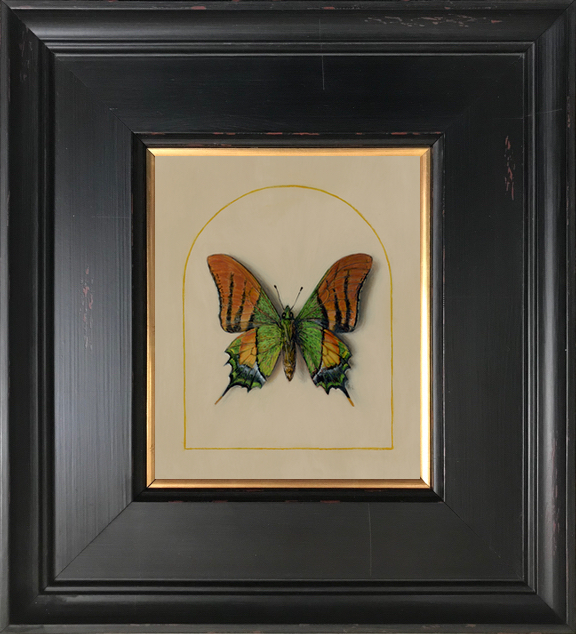
My Emperor of India is portrayed as more of a natural history specimen than as a creature that just settled down for a nibble or a rest. He is also displayed in verso, with his tummy face up (see his little feet?) so that the most vibrant coloration of his wings are in full view. I went for a full-on manuscript-inspired composition with the addition of a golden arch around this butterfly. My inspiration was Joris Hoefnagel, one of the early pioneers in still life paintings and the study of insects. It’s easy to see how still life paintings caught on with such fervor when viewing his iconic masterpieces created in the 1500’s.
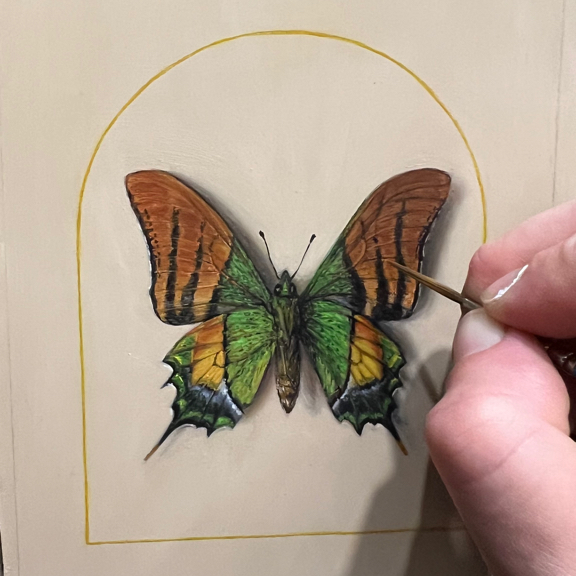
I love how my monthly miniature series gives me so much freedom to experiment while staying within the boundaries of just a few simple ideas. Within the concept of “swallowtail butterflies,” I experiment with compositional ideas within the same general theme and format. Looking back over all the paintings I completed over the year, I get ideas and inspiration for the next series of paintings. I also get ideas for works I exhibit in galleries.
On a personal note…
Hope you’re doing well and I please wish me luck for the next couple of weeks! Baby is due in a week and we don’t have anything ready! We almost have a countertop in the kitchen so fingers crossed it’s not still a complete madhouse when the baby gets here. As you can imagine, I’m exhausted! I have a set up to put my feet up while I’m painting, which means studio-time is also “resting-time”. I’ve thankfully been able to get a little painting done and I’m saving most of the the kitchen construction for my wonderful husband, friends and family.
